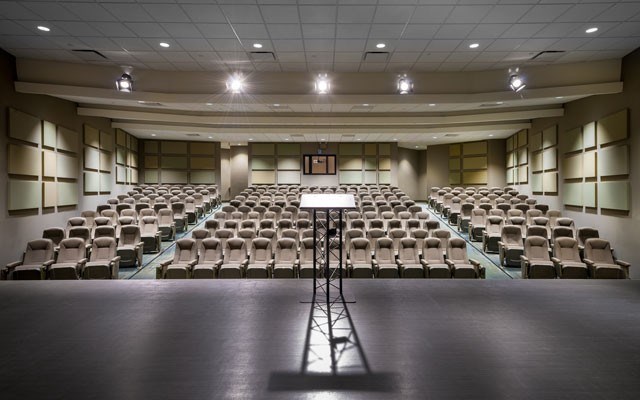What is not to love about the outdoor ice rink at Whistler Olympic Plaza?
And, by all accounts, the new renovations to the Rainbow Theatre were a big hit during the recent Whistler Film Festival.
And this week two new bridges were completed at Lost Lake north and at the Cheakamus River for the Sea to Sky Trail as well.
An eclectic list of items, all of which, on first blush, seem totally unrelated — but they are all connected through their funding source: provincial Resort Municipality Initiative (RMI) money. This funding comes to Whistler from the province, based on a hotel tax revenue formula, which not only takes into account the number of rooms occupied, but also the cost of each room.
It's a complicated formula, which assigns a multiplier to the number of rooms in a resort — as you can imagine that can have a huge impact on the final dollar amount. If you have over 1,350 rooms, as Whistler does, that multiplier is "2." For smaller resorts with fewer than 450 rooms the multiplier is "0. 5"
This subjective way of handing out funding is one aspect of the RMI that is being reviewed by Victoria, confirmed West Vancouver-Sea to Sky MLA Jordan Sturdy this past weekend, as he helped to open the outdoor ice rink at the Plaza.
"It is rather arbitrary in terms of the formulas that were created through the Resort Collaborative Initiative — in terms of how the benchmarks are, so I know that has to be considered, and the resort collaborative is looking at it and the province is looking at it," he said.
It's no secret the review of the RMI is underway, and that Whistler's council and mayor have been outspoken and, according to Sturdy, persuasive in their support of continuation of the RMI funding to Whistler.
But change is coming. What might it look like? That's not clear, but what is clear is that the province is looking for quantifiable results. So, I would hazard a guess that things like the operational costs of the Plaza ($127,922 this year) might be off the table in the next round of funding.
Of course Whistler's attraction as a #1-rated resort — with a capacity for about 30,000 overnight visitors in 150 hotels, condos, chalets, pensions and bed & breakfast facilities offering more than 10,000 rooms — means that the hotel-tax formula is a powerful driver of funds.
In the last funding cycle Whistler got over $7.7 million in RMI funds out of a total pot of $10.5 million. The funds are split between the 14 members of the Resort Collaborative — a group of communities recognized by the province for driving tourism in B.C. and therefore providing money to the coffers of the provincial government. Let's not forget that Whistler is responsible for an estimated 22.5 per cent of the entire annual tourist export revenue of B.C. Let's also not forget that the province has given the resort $60 million since the program began in 2006.
But here is an issue as we go forward. According to the province's own website on the RMI program it wants to see: Increased resort activities and amenities; increased visitor activity; increased private investment; increased employment in the community; increased tourism component in the local economy; increased municipal tax revenue and diversification of municipal tax base and revenue.
And the money comes out of a contingency fund so if the provincial economy begins to suffer — due say to LNG not being developed — that money won't be available to resorts.
Can Whistler put a checkmark to the measures listed above? On some, to be sure, we can. But not all. Having reached "build-out" in 2007 we won't be constructing any more commercial buildings that aren't already accounted for.
That is one of the main reasons Whistler has focused on its RMI-funded, $3.1 million, Festivals, Events and Animation program, which supports all the concerts, and festivals as well.
This appears to have grown to be a proven winner since the concept was first introduced a few years ago. I admit to being initially skeptical that focusing on bringing in smaller, or targeted-appeal, acts rather than blockbuster stars would work to grow occupancy — a driving force behind the strategy of how to use the RMI funds.
But time has shown the wisdom of the strategy. We have just seen the busiest summer on record and even this fall was unusually busy.
But are festivals going to keep getting funded? We will have to wait and see.
Are there other amenities that could be funded by RMI? What about funding upgrades to the museum, or lighting more of the Valley Trail system, executing the cultural connector path and wayfinding for it, funding more trail development and putting money towards upkeep of the trails we have — all, I would argue, are amenities that would drive tourism.
Whistler's occupancy year round is sitting at about 55 per cent — hence the constant resort chatter to diversify and grow room nights throughout the quieter parts of the year. We've had reports on cultural tourism, on an educational platform to drive visitors and reports on the need to upgrade the look of the resort to keep tourists coming back, and residents continue to diversity their own businesses and grow.
But there is no escaping that we are a tourist town — one that has become reliant on the millions we get from the province.
Perhaps the focus going forward should be on how we wean ourselves off RMI? A solution that bears investigation might be a taxation mechanism for resorts — that could even come with a built-in incentive... the more successful you are the more money you get.




